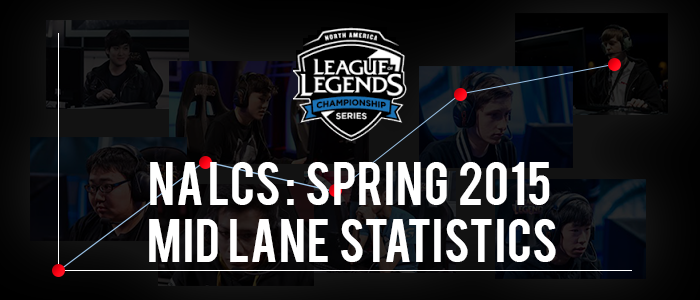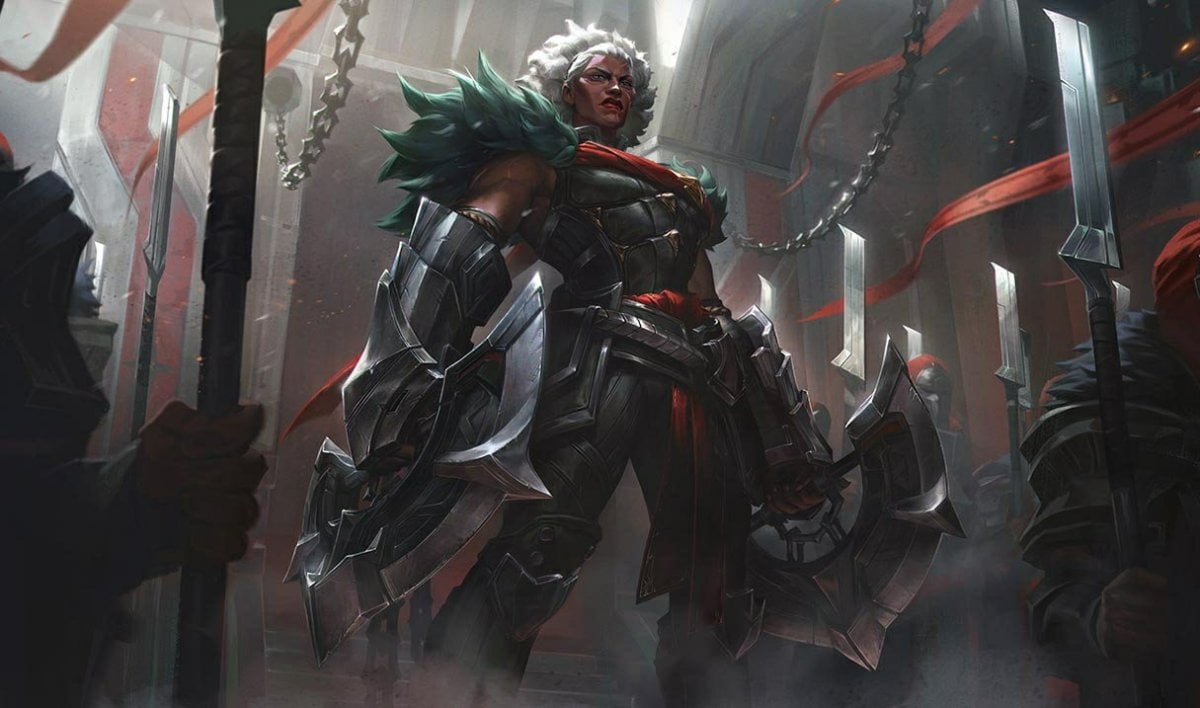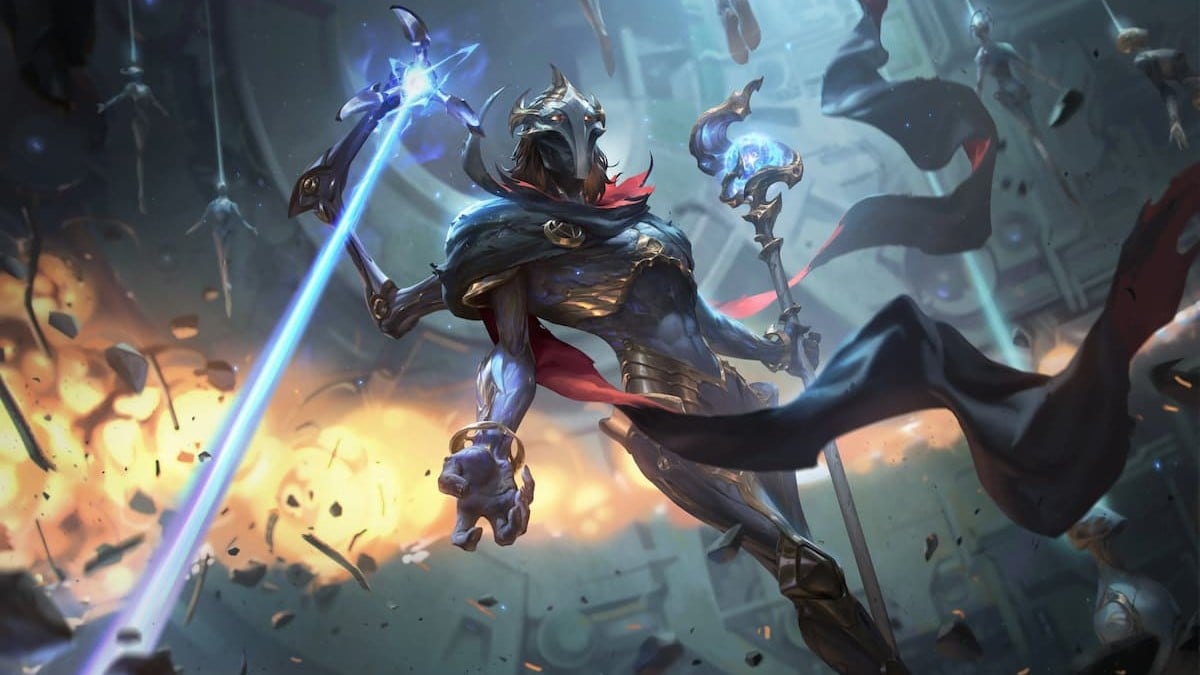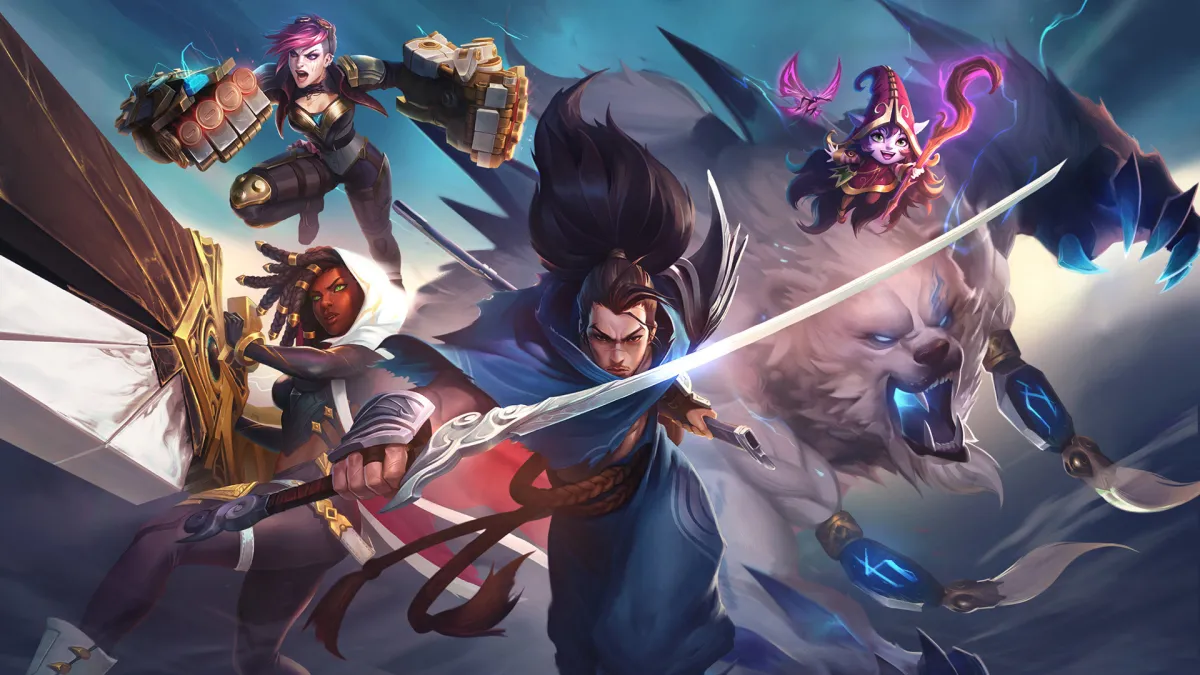With the full NA LCS 2015 Spring split wrapped up, post-mortem season is in full swing. One way to review player performances over the past few months is to compare statistics.
Today we’re looking at the Mid lane position to see what trends we can identify.
I’ve chosen to highlight a few specific stats with charts, but there are many more statistics available in the sortable table at the bottom of this article.
The statistics in this article are based on all NA LCS 2015 Spring split games, including the nine weeks of the regular season, tiebreaker games, and playoff games.
Note to Readers
Statistics are only one tool available for measuring player performance. This article is not meant to be a comprehensive player assessment to rank North American Mid lane players. It may show us some interesting things, but the findings from these numbers should always be put in context with other factors such as individual and team play style, champions used, game lengths, and so on.
- The “Earned Gold Differential at 10 Minutes” statistic measures the Mid lane player’s and opposing Mid’s earned gold at the 10-minute mark, takes the difference, and then averages that difference across all games played. These numbers are based on gold values rounded to the nearest hundred, which is the level of detail available in Riot’s match histories. Rounding errors may have some small influence on the values.
Bjergsen’s early advantages are incredibly impressive. In 26 games, Bjergsen was only behind his lane opponent in gold at 10 minutes a single time (based on amounts rounded to the nearest hundred). That came in Game 2 of the Finals, a game in which Bjergsen played AP Kog’Maw and went 9/0/6. There were five other games in which Bjergsen was even in gold at 10 minutes, and TSM only won two of those five games.
On the bottom end of this stat are mancloud, Pobelter, and Shiphtur, all of whom struggled to keep up in gold over the first 10 minutes.
Food for Thought:
Since gold amounts come not only from farm, but also from kills/assists and also from early towers, these numbers are in some cases a symptom of gank priorities or early game team strategies.
For example, the closest competitor to Bjergsen in this category is Link, who may have benefited from CLG’s aggressive lane-pushing early games by receiving global tower gold more often than his opponents.
We can also get some extra insight into the source of Bjergsen’s and Link’s leads by looking at their First Blood numbers. Both Bjergsen and Link contributed to 9 First Blood kills and gave up 2 First Blood deaths. (Note that Link played 22 games compared to Bjergsen’s 26.) Bjergsen had 6 FB kills and 3 FB assists, compared to 5 FB kills and 4 FB assists for Link.
This could imply that both received a lot of early gank support. But 4 of Bjergsen’s First Bloods were unassisted, compared to 1 of Link’s! It seems that more than any other Mid laner, Bjergsen created early gold leads by solo killing, or at least threatening to solo kill, his lane opponent.
- Damage to champions per minute is calculated separately for each game, then averaged across all games played. Bear in mind that this stat can be inflated by playing longer games, or by playing high-poke champions.
 No surprise, Bjergsen stands out here as well. The volume of damage Bjergsen dealt is miles ahead of the rest of the league. FeniX also outputted a high volume of damage to champions, with Link and XiaoWeiXiao following closely behind.
No surprise, Bjergsen stands out here as well. The volume of damage Bjergsen dealt is miles ahead of the rest of the league. FeniX also outputted a high volume of damage to champions, with Link and XiaoWeiXiao following closely behind.
Hai was roughly on par with Jesiz and Slooshi in damage per minute, towards the bottom end of the chart, but Cloud9 played in the least bloody games of any NA LCS team, so Hai had fewer opportunities to deal damage than other Mid laners.
As mentioned above, the type of champion played can affect average damage per minute (DPM). Bjergsen’s highest damage outputs came from one game on Kog’Maw (1,285 DPM) and two games on Xerath (916 DPM, 37.3 minute avg game length). FeniX’s biggest damage came from four games on Azir (813 DPM) and three on Corki (738 DPM), but his two Xerath games only averaged 524 DPM (40.7 minute avg game length). Link racked up his highest damage outputs in two Nidalee games (789 DPM) and one Karthus game (726 DPM), but his Corki game only led to 558 DPM (33.9 minute game). Hai averaged 759 DPM in five Corki games (42.0 minute avg game length).
We need to keep exploring the importance of champion type and game length to help put these numbers in context.
- Damage share is the percentage of the team’s total damage to champions that was contributed by the player, calculated separately for each game and then averaged across all games played.
- Gold share is based on earned gold, which excludes each player’s 475 starting gold and the inherent gold gain of 1.9 per second that starts at 90 seconds.
(You can click the table to get a full-size view if the numbers aren’t readable.)
Gold share and damage share aren’t directly related, but they do influence one another. A few things stand out to me as especially interesting based on this chart.
The first thing to notice is how narrow the gold share range is across all NA Mids, with a low of 22.4% (Hai) to a high of 26.2% (XiaoWeiXiao), a gap of 3.8 percentage points. There aren’t really any hoarders or beggars among the group, like we tend to see at the ADC position for example, where gold share ranged from 23.8% to 29.5%, a gap of 5.7 percentage points.
Bjergsen stands out here, like everywhere else, with his gargantuan 33.7% share of TSM’s damage, the highest of any player in the entire NA LCS (though slightly behind Sneaky’s regular season mark of 33.9%). Link also impresses with 31.3% of CLG’s damage, doing so with a below-average share of team gold.
XiaoWeiXiao stands out for having the highest gold share among Mids but a below-average damage share. But this has to be taken in context, and in XWX’s case we have to consider the high damage outputs of his Jungler, Rush, and Top laner, Impact. The more damage those two do, the smaller XWX’s damage share gets. Meanwhile we can see above that XiaoWeiXiao’s damage per minute is fairly high, so he wasn’t squandering his gold!
FeniX and Pobelter also come out looking pretty good in these stats.
- Wards placed per minute and wards cleared per minute are calculated separately for each game, then averaged across all games played. All ward types are included.
 Hai’s vision control has been been talked up heavily in recent weeks, and deservedly so. Only Jesiz and XiaoWeiXiao were able to rival Hai’s warding output, but Hai stands along in ward clears per game.
Hai’s vision control has been been talked up heavily in recent weeks, and deservedly so. Only Jesiz and XiaoWeiXiao were able to rival Hai’s warding output, but Hai stands along in ward clears per game.
FeniX, Shiphtur, and Slooshi were all well below average in the vision game, providing very few ward placements and clears.
Bjergsen’s low ward clear numbers are somewhat surprising, and reflect a trend with his entire team. As a team, TSM was 7th out of 10 in proportion of enemy’s wards cleared during the regular season, and while they were 3rd of 6 in this category in the playoffs their percentage actually dropped (from 33.5% in regular season to 32.9% in playoffs). Was this low priority on ward clears intentional, or is it something they’ll be working on for next split?
Full Stats Table
For a sortable, scrollable table of Mid stats from the past split, head to the Oracle’s Elixir post and scroll to the bottom of the page.
 Click the table for a full-size, readable view, or go to Oracle’s Elixir for a sortable, scrollable version.
Click the table for a full-size, readable view, or go to Oracle’s Elixir for a sortable, scrollable version.
A few other small highlights from these statistics:
- Bjergsen’s KDA ratio of 7.0 across the entire split is almost double the next highest player, which is FeniX at 3.8.
- Bjergsen and Link top the average kill participation column, with 75% and 74% participation respectively.
- Hai was killed for First Blood 6 times in 28 games, but participated in 4 FB kills back the other direction.
- Even though Link’s gold share was below average, he actually earned the third-most gold per minute, which suggests that CLG as a team tended to get pretty rich.
If you found these stats interesting or useful, leave a comment and let me know! If the interest is there, I can put together similar charts and tables for other positions.
You can find more NA LCS statistics for both players and teams in the Statistics section of Oracle’s Elixir.
Thank you to Daniel “Exorant” Hume for providing the graphics and beautifying the charts!














Published: Apr 24, 2015 08:47 am